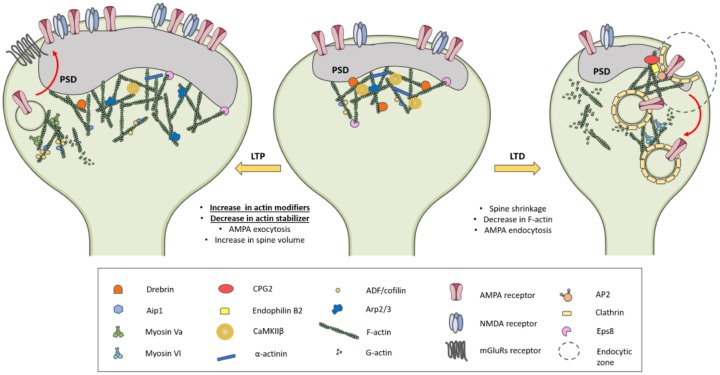Figure 2.
Dendritic spine actin cytoskeleton dynamics in activity-dependent synaptic plasticity phenomena. During the first phase of long-term potentiation (LTP) (1–7 min), there is a rearrangement of the actin cytoskeleton characterized by (i) the increase in the synaptic level of actin-binding proteins that are able to modify F-actin through several process, such as severing (cofilin), branching (Arp2/3), or capping (Aip1); (ii) the decrease in actin-stabilizer proteins (drebrin, CaMKIIβ, and α-actinin) responsible for stabilizing actin filaments and linking them to the postsynaptic density (PSD). After this phase, cofilin is inactivated to enlarge the spine and stabilize changes in structure. During long-term depression (LTD), the spine shrinkage is associated to a decrease in spine actin filaments. The actin cytoskeleton and actin-binding proteins are also involved in AMPA receptor trafficking: LTP triggers AMPA receptor forward trafficking, while LTD promotes clathrin-mediated endocytosis of AMPA receptors.

